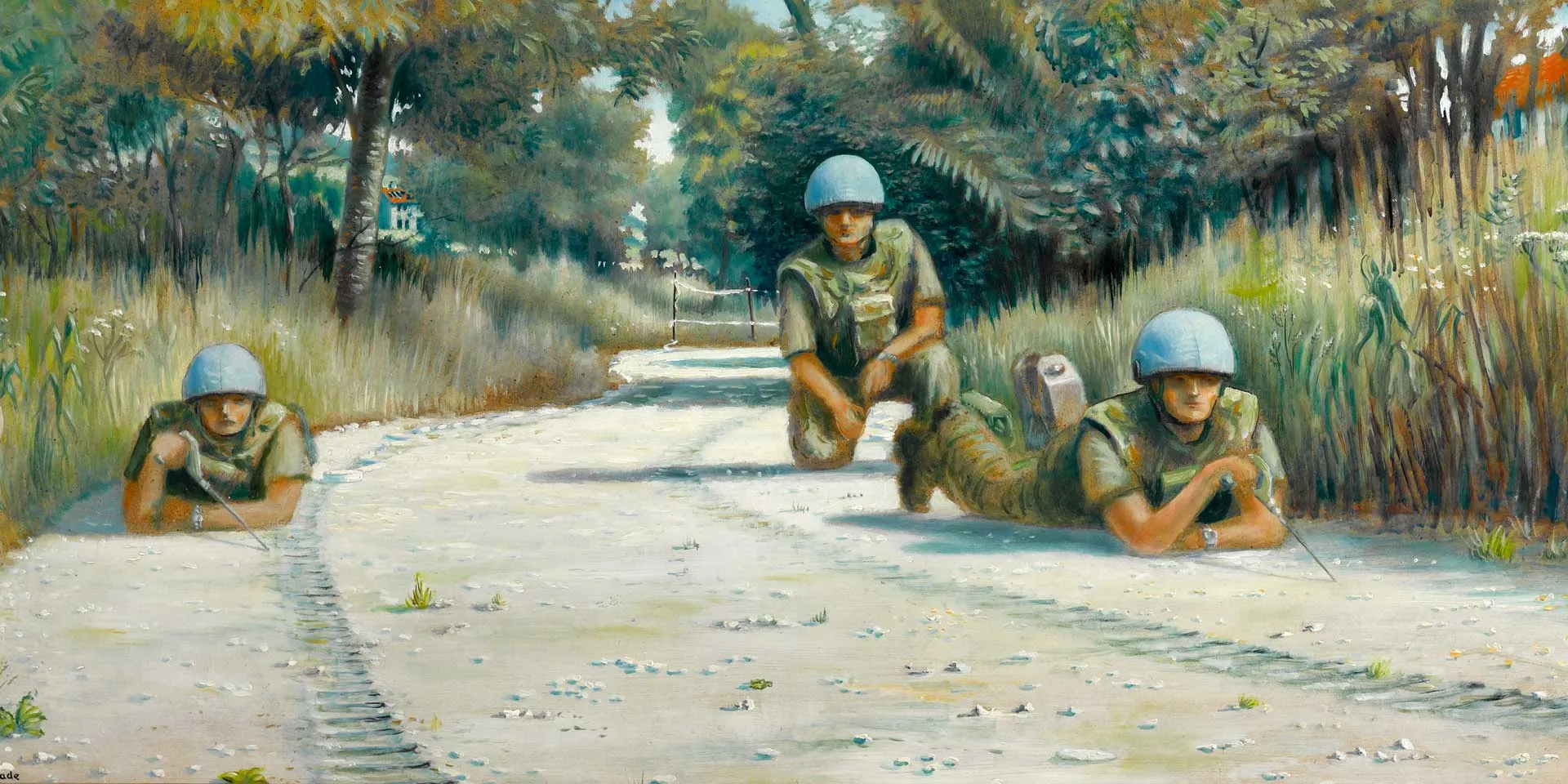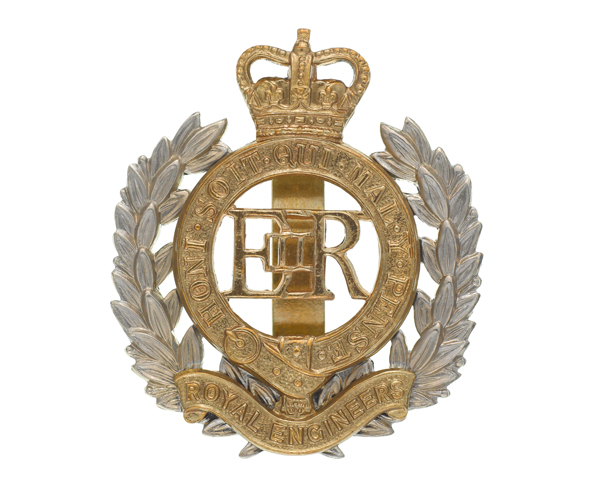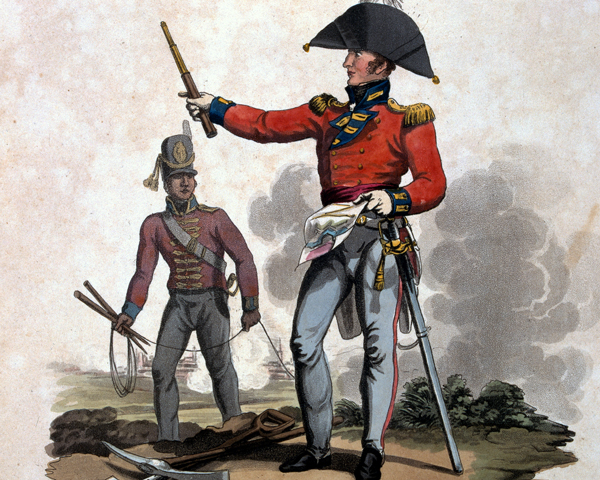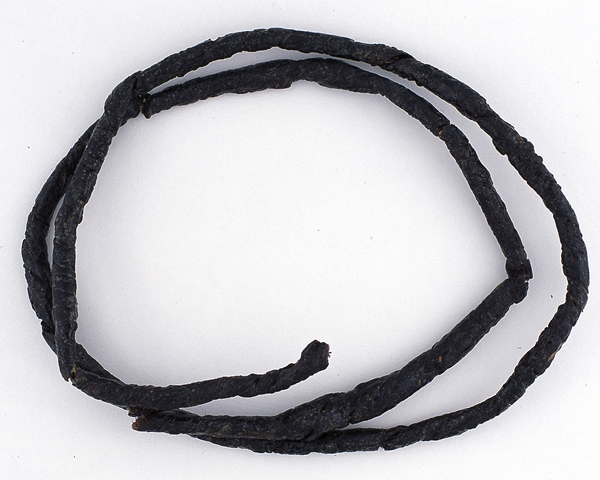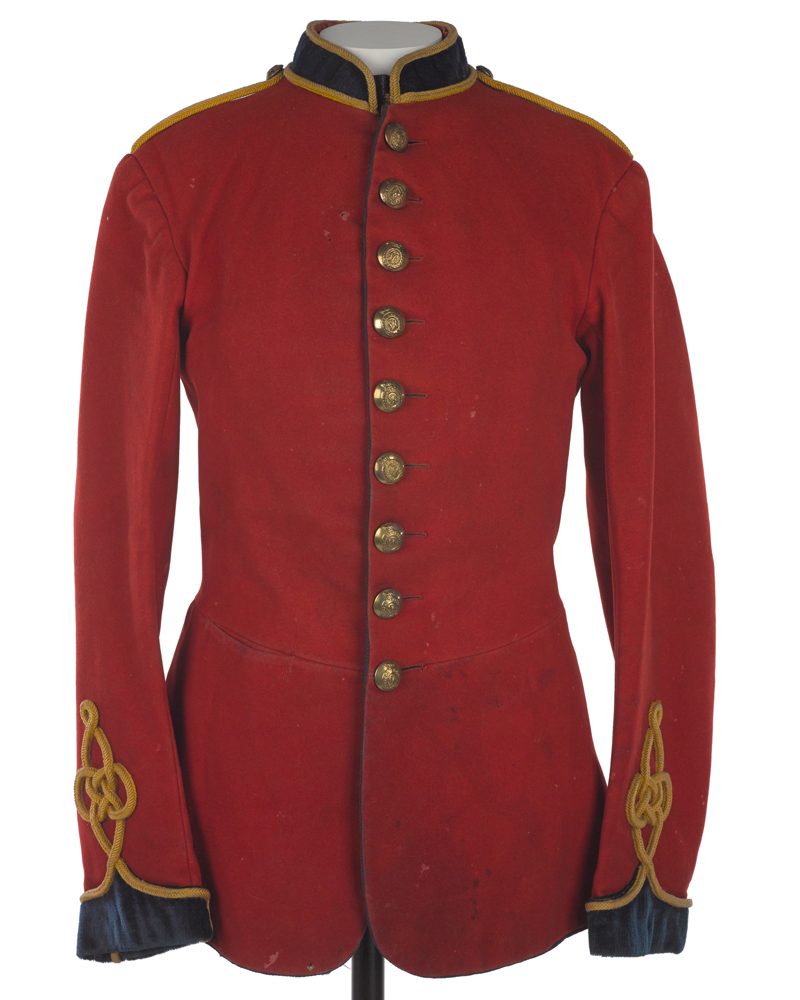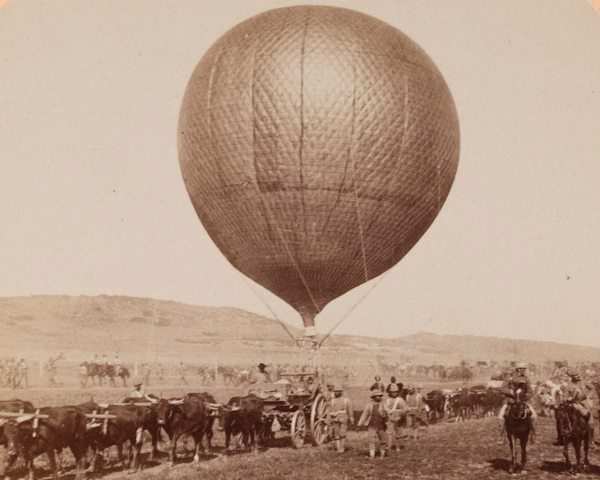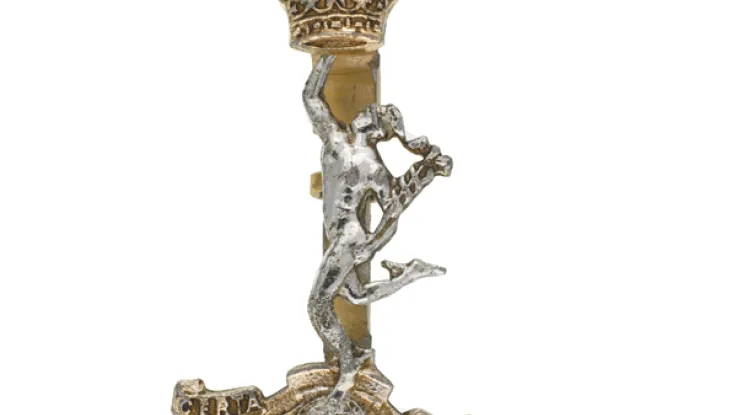Origins
Since medieval times, builders and engineers had formed part of British armies. But they were first constituted as a corps in 1716 by the Board of Ordnance. The unit gained its 'Royal' prefix in 1787, becoming the Corps of Royal Engineers (RE).
Originally an officer-only corps, its other ranks were supplied by contracted civilian workers. However, from 1787, soldiers were provided by the Corps of Royal Military Artificers. In 1812, this unit’s name was changed to the Corps of Royal Sappers and Miners.
A single corps
In 1855, when the Board of Ordnance was abolished, the Royal Engineers and the Royal Sappers and Miners transferred to the Commander-in-Chief’s direct control.
The following year, they were merged into a single corps. Their headquarters moved from Woolwich to Chatham in Kent.
Roles
By this time, the two separate corps had already served in many campaigns, including the American War of Independence (1775-83), the French Revolutionary and Napoleonic Wars (1793-1815), and countless colonial conflicts around the globe.
Their duties included siege warfare, map-making and the construction of bridges, roads, fortifications, drainage systems and camps. Engineers also pioneered the military use of the telegraph during the Crimean War (1854-56) and were responsible for the Army's postal service.
Sappers served at home, too. They built defences, particularly along Britain’s exposed southern coasts. Indeed, it was an RE officer who first suggested the use of Martello towers to protect against invasion. Engineers also surveyed the British Isles to assist with military defence, helping establish the Ordnance Survey.
They saw varied service in civil construction, including the building of railway, telegraph, canal and irrigation networks in Canada, India and elsewhere. Engineers also assisted with the construction of the Victoria and Albert Museum (V&A) and Pentonville Prison in London.
Photography and flying
Work on the V&A accelerated the unit's interest in photography, with members of the corps going on to document not only many military campaigns, but also archaeological excavations. They were involved in surveying expeditions in locations as varied as Turkey, the Arctic, Palestine, Panama, India, Singapore, China, and Russia.
In the early 20th century, Engineers were also involved in the beginnings of British military aviation, running the Army's School of Ballooning. In 1911, the corps formed an Air Battalion that provided part of the basis for the Royal Flying Corps a year later.
Quiz
How many battle honours does the Corps of Royal Engineers have?
The Royal Engineers do not have individual battle honours. Their motto is 'Ubique' (meaning ‘Everywhere’), reflecting the fact that the unit has been involved in all of the British Army's battles and campaigns.
World Wars
During the First World War (1914-18), the corps's duties expanded into tunnelling, trench-building, forestry, quarrying, gas warfare, inland water transport, aerial survey, topographical photography and camouflaging techniques. Given these wide-ranging tasks, it is not surprising that the Royal Engineers expanded from about 25,000 men in 1914 to 315,000 in 1918.
Many of these roles continued during the Second World War (1939-45). But new roles were also added, including bomb disposal, mine clearance, airfield construction, building Bailey bridges, and the use of tanks adapted for battlefield engineering known as AVREs (Armoured Vehicle Royal Engineers). Engineers also helped design, build and operate the Mulberry Harbour during the Normandy campaign (1944).
Post-war
After 1945, the unit provided most of the Army's contribution to the United Kingdom's atomic weapons development programme. Sappers also served in most of the British Army’s post-war campaigns, including Northern Ireland (1969-2007), where they played an important role in bomb disposal. Engineers also designed and built fortifications around public building, barracks and cross border posts.
Experience gained during the Troubles proved invaluable when Engineers later found themselves countering improvised explosive devices (IEDs) in Afghanistan (2001-14) and Iraq (2003-09).
Today
Today, the corps is divided into several regiments, each of which has a specialist role, such as amphibious assault, bomb disposal, countering chemical or nuclear warfare, air support and armoured engineering.
As well as undertaking combat engineering - performing construction or demolition tasks during operations - all Royal Engineers have a specific trade. These include electrician, plant operator mechanic, plumber, bricklayer, plasterer, carpenter, fabricator, building draughtsman, surveyor, driver and bomb disposal operative.
Regimental museums
The National Army Museum works with a network of Regimental and Corps Museums across the UK to help preserve and share the history and traditions of the Army and its soldiers.
Discover more about the Corps of Royal Engineers by visiting the Royal Engineers Museum in Gillingham.

